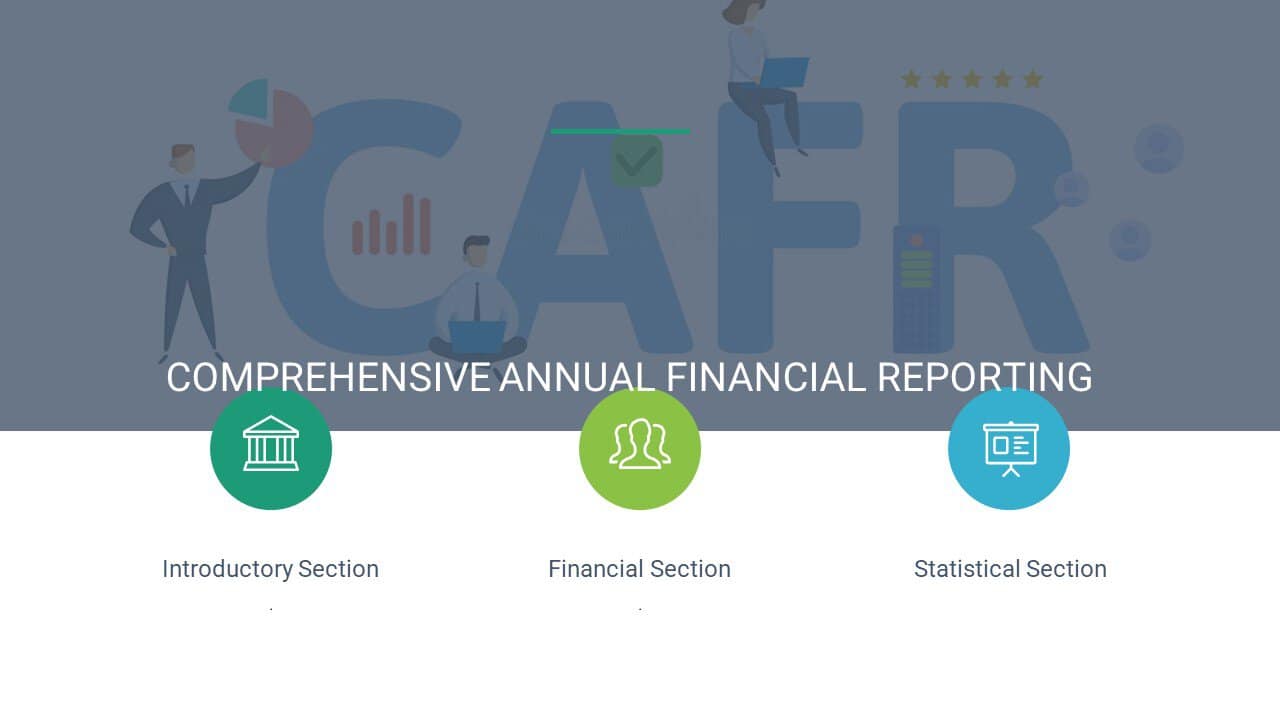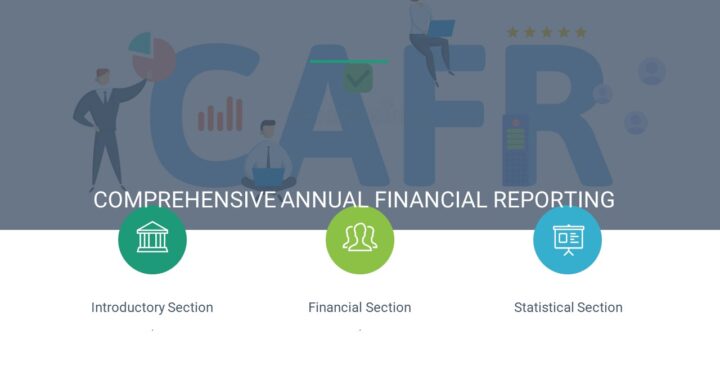
The comprehensive annual financial report covers all funds and activities of the primary government and provides an overview of the discretely presented component units of the reporting entity. The comprehensive annual financial report includes introductory, financial, and statistical sections.
The financial section includes management’s discussion and analysis (MD&A). MD&A is required supplementary information. It is an analysis of financial activities based on currently known facts, decisions, or conditions expected to significantly affect the financial position or results of operations.
- Also included in the financial section are the basic financial statements. They include the following:
- Government-wide financial statements
- Fund financial statements
- Notes to the financial statements, including a summary of significant accounting policies
- Other information in the financial section includes
- Required supplementary information (RSI) other than MD&A (e.g., budgetary comparison schedules),
- Combining statements, and
- Individual fund statements and schedules.
Combining statements are included in the comprehensive annual financial report when the primary government has more than one (1) nonmajor governmental or enterprise fund, (2) internal service or fiduciary fund, or (3) nonmajor discretely presented component unit.
Individual fund statements are reported when the primary government has just one nonmajor fund of a given type or when prior-year or budgetary comparisons are not included in RSI.
Budgetary Accounts
Most governments integrate their budgets into the accounting system for (1) the general fund, (2) special revenue funds, and (3) other funds with numerous transactions.
The journal entries to create the budget include debits to estimated revenues and estimated other financing sources (anticipatory assets) and credits to estimated other financing uses and appropriations (anticipatory liabilities).
Budgetary fund balance is the budgeted change in fund equity.
Encumbrances
An encumbrance is a formal commitment to expend resources. Encumbrance accounting may be used only for internal purposes.
- If an encumbered amount has not been restricted, committed, or assigned, it is included in committed or assigned fund balance.
The journal entry is a debit to encumbrances and a credit to encumbrances outstanding. This entry is reversed when the goods are delivered or the services are performed.
Conceptual Framework
Fiscal accountability is the responsibility of a government to justify that its current actions comply with public decisions about expending resources in the short term.
Operational accountability is the need to report the extent to which accounting objectives have been met with available resources.
Interperiod equity is the concept that resources received during a period should suffice to pay for the services provided.
The categories of objectives are (1) public accountability, (2) evaluating operating results, and assessing services provided.
If you have found this blog to be useful, you may share with your friends. Thanks!


